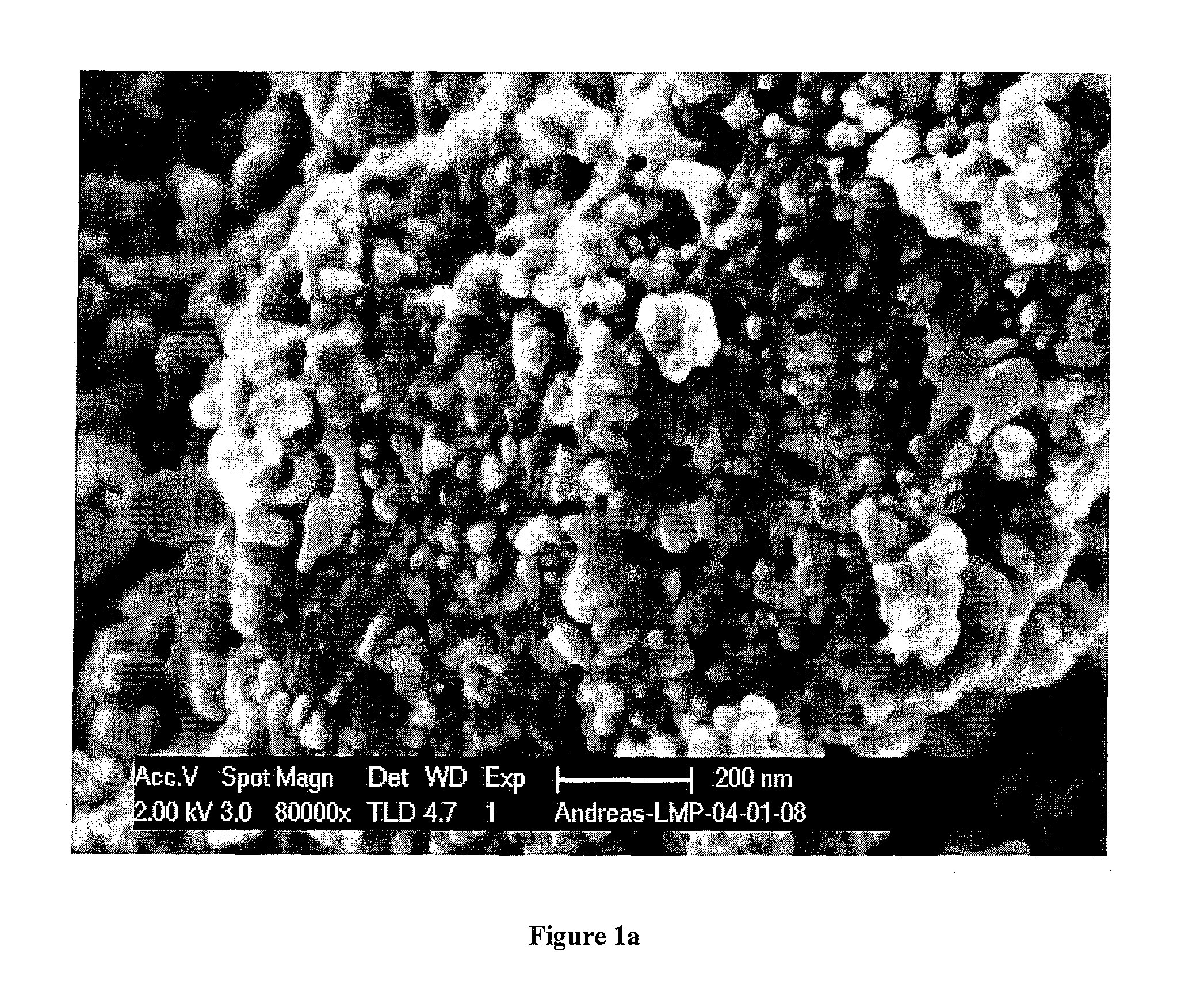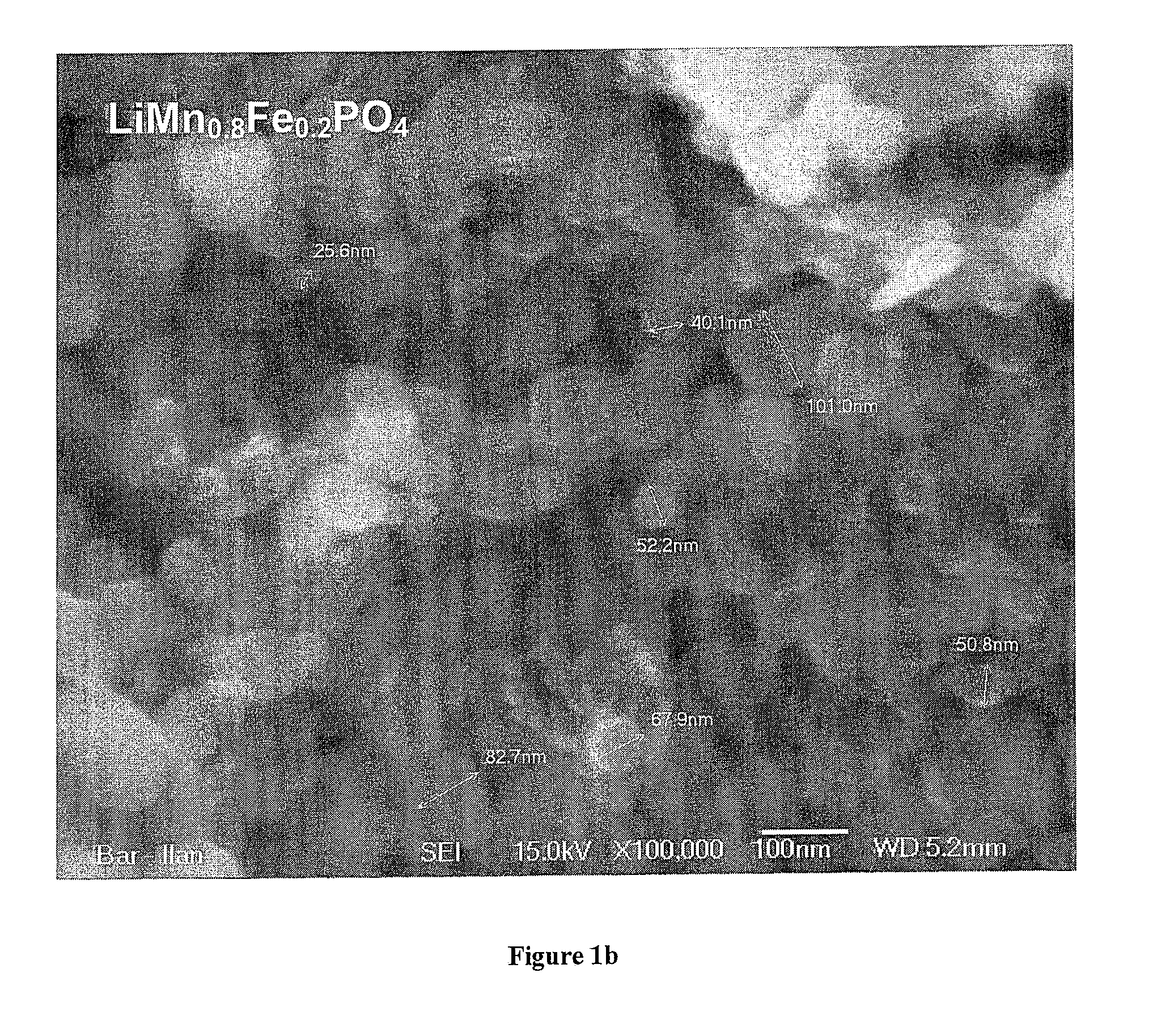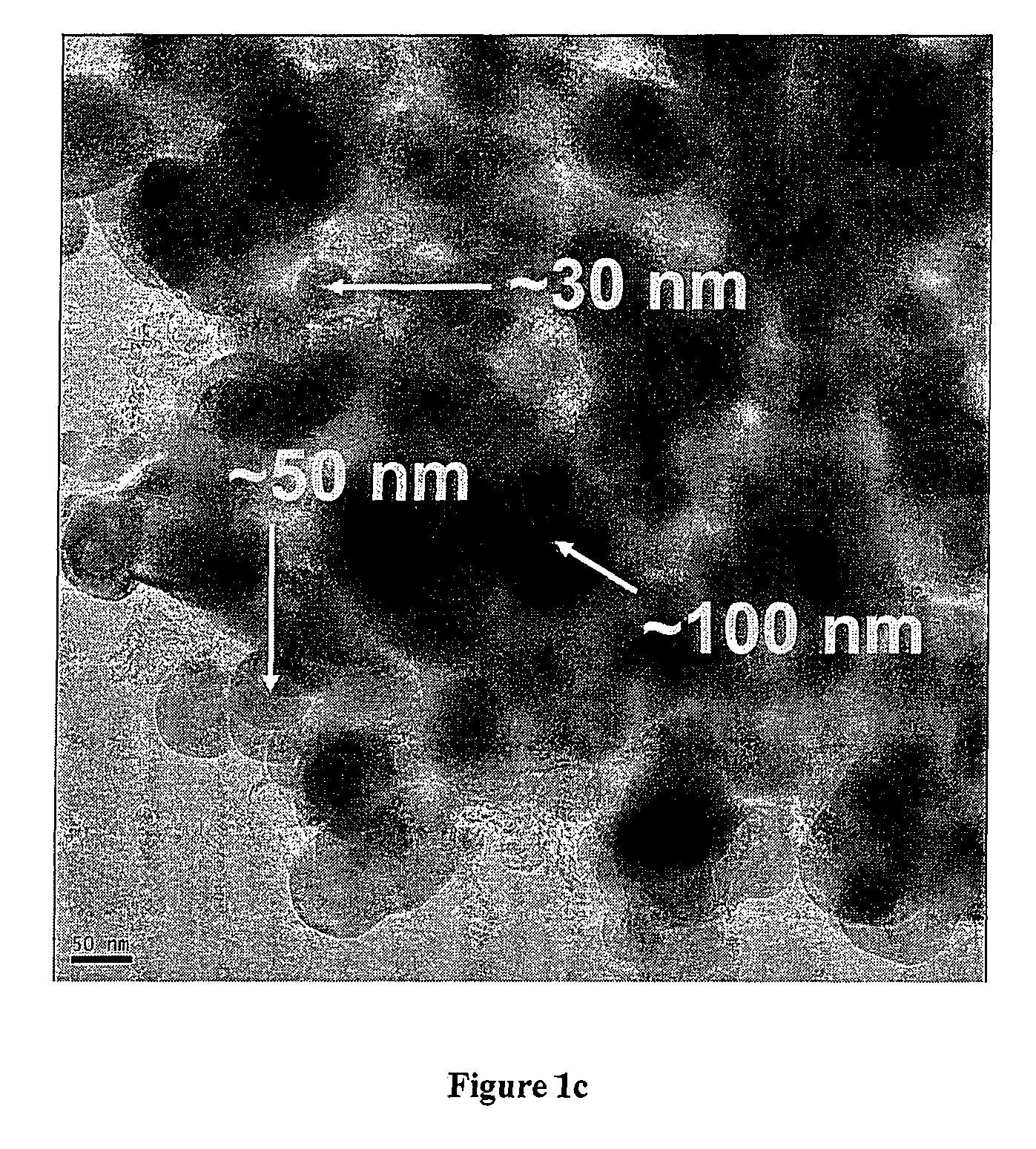Lithium manganese phosphate/carbon nanocomposites as cathode active materials for secondary lithium batteries
a technology of carbon nanocomposites and active materials, which is applied in secondary cell servicing/maintenance, cell components, non-metal conductors, etc., can solve the problems of poor long-term stability of other materials, such as limn/sub>o/sub>4, and the rare and therefore expensive element of cobal
- Summary
- Abstract
- Description
- Claims
- Application Information
AI Technical Summary
Benefits of technology
Problems solved by technology
Method used
Image
Examples
example 1
Synthesis of LiMnPO4 / C nanocomposite
[0050]A mixture of 3.45 g MnCO3 (Aldrich 99.9%)+3.12 g LiH2PO4 (Aldrich 99%)+1 g Ketjenblack® EC600JD (Akzo Nobel) was milled in a hardened steel container of 250 mL capacity with 12 hardened steel balls of 20 mm diameter in a planetary ball mill (Retsch PM 100) at 500 rpm for 2 hours. The obtained powder was heated up to 450° C. within 30 minutes and maintained at this temperature for 1 hour under a stream of argon+8% hydrogen.
example 2
Synthesis of LiMn0.9Fe0.1PO4 / C nanocomposite (18% Ketjenblack®)
[0051]A mixture of 3.105 g MnCO3 (Aldrich 99.9%)+0.54 g FeC2O4.2H2O (Fluka 99%)+3.12 g LiH2PO4 (Aldrich 99%)+1 g Ketjenblack® EC600JD was milled as described in Example 1 and heated at 350, 450 or 550° C. for 1 hour under argon+8% hydrogen.
[0052]FIG. 1 shows a scanning electron microscope picture of the nanocomposite obtained at 450° C., indicating a primary particle size in the order of 50 nm for the brighter LiMn0.9Fe0.1PO4 component.
[0053]FIG. 2 shows the X-ray diffraction patterns of the three samples, indicating poor crystallization after 1 hour at 350° C., while the sample heated for the same time at 450° C. is well crystallized LiMn0.9Fe0.1PO4 without any apparent impurities. From the line broadening an average crystallite size of 60 nm with negligible strain was calculated with the Warren-Averbach method. This agrees with the primary particle size in the order of 50 nm observed in the SEM picture (FIG. 1).
[0054]
T...
example 3
Synthesis of LiMn0.8Fe0.2PO4 / 10% C Nanocomposites with Different Carbon Materials
[0055]A mixture of 2.76 g MnCO3 (Aldrich 99.9%)+1.08 g FeC2O4.2H2O (Fluka 99%)+3.12 g LiH2PO4 (Aldrich 99%)+0.5 g carbon was milled and heat treated as described in Example 1.
Following carbon materials were compared:
Ketjenblack® EC-300J (Akzo Nobel, 800 m2 / g)
Ketjenblack® EC-600JD (Akzo Nobel, 1400 m2 / g)
Printex®. XE 2 (Degussa, 950 m2 / g)
Black Pearls® 2000(Cabot, 1500 m2 / g)
Shawinigan acetylene black C-55 (70 m2 / g)
Vulcan XC 72R (270 m2 / g)
Multi walled carbon nanotubes (MWCNT)
High surface graphite Timrex® HSAG300 (Timcal, 280 m2 / g)
Timrex® KS4 graphite (Timcal, 26 m2 / g)
Timrex® KS6 graphite (Timcal, 20 m2 / g)
Timrex® SFG6 graphite (Timcal, 17 m2 / g)
Timrex® MB15 graphite (Timcal, 9.5 m2 / g)
Norit® DLC Super 50 activated carbon (Norit, 1600 m2 / g)
PUM
| Property | Measurement | Unit |
|---|---|---|
| specific surface area | aaaaa | aaaaa |
| specific surface area | aaaaa | aaaaa |
| specific surface area | aaaaa | aaaaa |
Abstract
Description
Claims
Application Information
 Login to View More
Login to View More - R&D
- Intellectual Property
- Life Sciences
- Materials
- Tech Scout
- Unparalleled Data Quality
- Higher Quality Content
- 60% Fewer Hallucinations
Browse by: Latest US Patents, China's latest patents, Technical Efficacy Thesaurus, Application Domain, Technology Topic, Popular Technical Reports.
© 2025 PatSnap. All rights reserved.Legal|Privacy policy|Modern Slavery Act Transparency Statement|Sitemap|About US| Contact US: help@patsnap.com



